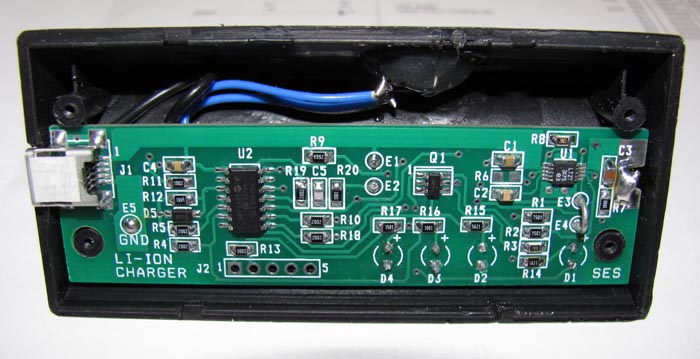[/begin: rant]
You know, this flashlight driver circuit market is such a circus.
I just got into this flashlight game. I had thought modifying these silly little LED drivers (with so few components on board) would be a cakewalk. Just like the cheap Chinese power supply boards, I can look for datasheets of the chip, figure out how the chips are connected, and man-handle them into submission.
Nope. Not so easy. Info is as scares as hens teeth. The same board from different supplier has different characteristics (different available modes, different mode memory…) Some chips has no label, and the silk-screen prints nothing useful. If you find the boards model, that is a lucky strike. If you find the boards revision, that is an asteroid strike in a well. If you find the boards' user-manual, that is a miracle. Dare I say anything about finding the board's schematic!
Then there is this "next mode memory" made for the next nut case convention. Why would anyone want that!
These "stars on the board" to select modes is another wonder. With an MCU already on board, it would be so easy to design it for 5 pairs of bare-pads so you set your selection. Say 100K resister on first pad-pair for 100%, 30K for 30% on the second pad-pair, short the rest for just two mode or put on a 10K on the third pad-pair for a 10% 3rd-mode support. That kind of selection makes perfect sense to me - instead, we have these silly stars to select predefined modes. Why do I want to select which star just to select which "someone else's choice" I can live with. Why not just make the choice I want.
I suppose, if I want more control, I should get the Nanjg and burn my own ATTINY. The Nanjg feature set is about right, I don't like the blinking at fixed 3Volt, but I like the LO-MID-HI instead of HI-MID-LOW. I am not sure if Nanjg resumes my mode or set to the next one upon power-on. Some advertise it as "next mode memory" and some advertise it as "mode memory" and of course visually they are identical… You try to email the seller for info, good luck! it is like asking a bull to lay an egg.
Like I said, this driver circuit market is like a circus…
[/end rant]
You know, this flashlight driver circuit market is such a circus.
I just got into this flashlight game. I had thought modifying these silly little LED drivers (with so few components on board) would be a cakewalk. Just like the cheap Chinese power supply boards, I can look for datasheets of the chip, figure out how the chips are connected, and man-handle them into submission.
Nope. Not so easy. Info is as scares as hens teeth. The same board from different supplier has different characteristics (different available modes, different mode memory…) Some chips has no label, and the silk-screen prints nothing useful. If you find the boards model, that is a lucky strike. If you find the boards revision, that is an asteroid strike in a well. If you find the boards' user-manual, that is a miracle. Dare I say anything about finding the board's schematic!
Then there is this "next mode memory" made for the next nut case convention. Why would anyone want that!
These "stars on the board" to select modes is another wonder. With an MCU already on board, it would be so easy to design it for 5 pairs of bare-pads so you set your selection. Say 100K resister on first pad-pair for 100%, 30K for 30% on the second pad-pair, short the rest for just two mode or put on a 10K on the third pad-pair for a 10% 3rd-mode support. That kind of selection makes perfect sense to me - instead, we have these silly stars to select predefined modes. Why do I want to select which star just to select which "someone else's choice" I can live with. Why not just make the choice I want.
I suppose, if I want more control, I should get the Nanjg and burn my own ATTINY. The Nanjg feature set is about right, I don't like the blinking at fixed 3Volt, but I like the LO-MID-HI instead of HI-MID-LOW. I am not sure if Nanjg resumes my mode or set to the next one upon power-on. Some advertise it as "next mode memory" and some advertise it as "mode memory" and of course visually they are identical… You try to email the seller for info, good luck! it is like asking a bull to lay an egg.
Like I said, this driver circuit market is like a circus…
[/end rant]


